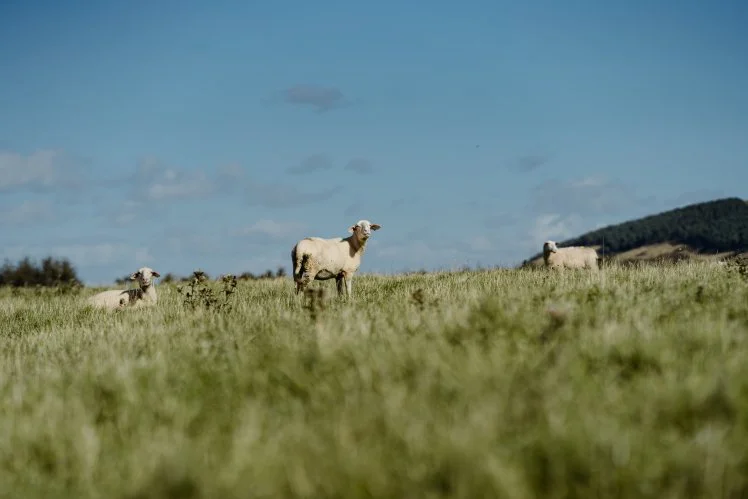South Lanarkshire Land and our Approach to Farming it
A view from our farm toward the Pentland Hills
Our farm sits 1000ft above sea level, meaning our growing season—and for us, the grass—starts later than in warmer areas. That said, being in the centre of Scotland, we often feel like we get the worst weather from both the east and west, but Lanarkshire is actually an excellent area for growing grass. It has a deep-rooted history as a strong dairy region, and with Edinburgh and Glasgow nearby, we have great links to Scotland’s main population centres.
When my father was exploring ways to diversify the farm in the early 1980s, he came across a history of sheep milking in the area. The dairy sheep that suit our climate best are a French breed called Lacaune. They don’t produce as much milk as, say, a Friesian sheep, but the quality is higher, with more fat and protein (solids). We also like them for their good feet, strong udders, and longevity.
What we grow and why it matters
Today, Andrew and I focus on growing what works best for us—grass. It’s the key ingredient for making high-quality grazing, silage and hay, which sustain our sheep and goats through spring and summer when they graze. We grow a mix of grasses: long-term lays for grazing, hay mixes, and silage mixes rich in clover, which boosts protein and naturally fixes nitrogen in the soil, reducing the need for fertilisers. We always see a lift in milk yield when the animals go out on fresh spring grass, so we rotate them every few days to make sure they’re always getting the best growth.
Our sheep grazing in the fields.
We cut our silage at the end of May or early June—weather permitting—when nutrients are at their peak. Our two small, narrow clamps help keep the silage fresh, reducing spoilage and waste. Silage quality is crucial for sheep and goats, as poor silage can cause listeria, so we only feed them the best. Any spoiled bits Andrew isn’t happy with go straight to the pigs or onto the midden.
For over five years now, we’ve not used artificial fertilisers or pesticides on the farm, and we’re convinced it has improved our milk quality. I think we’re making the best cheese we ever have. We’ve seen wildflowers returning to the fields and more birdlife—though that’s harder to quantify.
We also grow some barley and peas and are trialling oats to reduce reliance on bought-in feed and provide straw for bedding. Almost all the whey from cheesemaking is fed back to our Tamworth X Black pigs. We have 80 of them, living outdoors in the woods, on stubble fields, and in any pasture that needs reseeding. They’re hardy and work well for us—so long as we can keep them contained!
Logs from our woodland for our biomass boiler that powers Errington’s Barn
Sustainability in action
Our farm is powered by two 25kW C&F wind turbines, helping to keep electricity costs down. At Errington’s Barn, we have a wind turbine for power and a biomass boiler for heating and hot water, all fuelled by wood from the farm’s own woodlands.
Our work on the farm underpins everything we do to enable us to produce food on the table at Errington’s Barn with the core ingredients being produced on the farm itself and the ingredients which are bought in are produced from other sustainable business such as Supernature rapeseed oils, Mungoswells flour, Phantassie Organics, Fower Coffee and Kedar Milk.
We only use, and sell, sustainable produce at Errington’s Barn farm shop and kitchen




